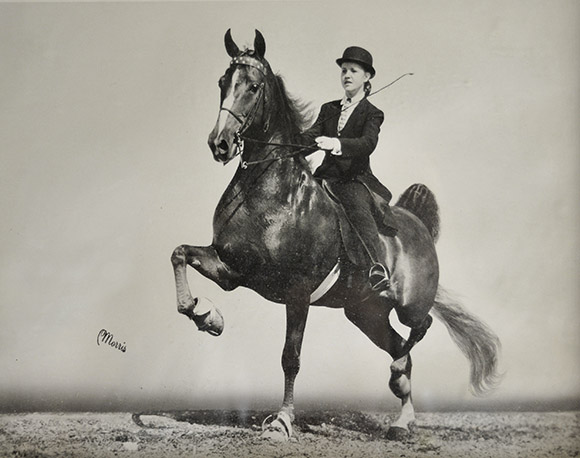Judy Russell – Telling It Like It Is
322 – The Annual, 2016-2017 From the archives of The Canine Chronicle, The Annual, 2016-17 by Joan Harrigan
Karnovanda Kennels
Much has been written about the future of the sport of purebred dogs. There are lots of shows, but entries are declining at many of them. New breeds gain full AKC recognition each year; yet the survival of some formerly popular breeds is threatened by dwindling gene pools and too few new breeders.
Anyone with doubts about the prospects for our sport would benefit from a talk with Judy Russell, who has bred Siberian Huskies at her Karnovanda Kennels since 1959. She believes that there are enough breeders who “do it because they love the breed—not to be famous or to make money”—to keep the sport going.
Russell is just such a breeder. When asked if she’d like to talk about her kennel’s records or wins that were especially cherished, she simply replies “no.” Not that there aren’t accomplishments of which to be proud. Her website gives the statistics, but Russell admits that it’s out-of-date—she’s well past the 22 generations of her own breeding and more than 400 champions the site indicates. She’s been a board member of the Siberian Husky Club of America and was named their breeder of the year for three consecutive years. Her dogs have won their breed at Westminster and the Siberian Club of America National. But this is not what is important to her—rather, it’s the breed itself.
Horses and “Gorgeous Dogs”
Russell grew up in Chicago and while her family had pet dogs, horses were her first passion. She went to a riding camp when she was nine—this led to her father’s purchase of her first horse, and ultimately “a stable full of Saddlebreds.” She showed her horses throughout the Midwest, and ironically, in 1958, they provided an entrée to the world of purebred dogs.
Russell’s trainer, Chris Reardon, was struck by some “gorgeous” dogs he saw at the American Royal Horse Show in Kansas City, Missouri. Russell remembers that he called her (she was in college at Marquette) and said, “I’ve ordered two—which one do you want?” Nineteen-year-old Russell chose the bitch, and that is how she acquired her first Siberian Husky. “Nonie” went on to become Ch. Eska’s Nonie UD—the fourth of her breed to earn the Utility Dog title.
In 1961, Russell married, and she and her husband, Joel, went on to graduate school at UCLA-Berkeley, where Russell earned a teaching certificate and her husband was a PhD candidate in chemistry. Though never the enthusiast that his wife soon became, Joel Russell “put up with the dogs and enjoyed them” during their marriage, and even built their kennels. In the beginning, Russell showed her Siberians in obedience—her early dogs had at least Companion Dog titles. She got into conformation because she thought she’d enjoy it. Russell is proud to have owned both the third (Ch. Kim’s Karen UD) and fourth (Nonie) utility-titled Siberians. Anyone who has attempted a utility title (known in some quarters as “futility”) can appreciate what an accomplishment that was, particularly with a non-traditional obedience competition breed. In time, Russell’s obedience career was ended by the births of her children—she was far too busy to train for competition.
From California, the Russells moved to Minnesota for Joel’s post-doctoral work, and then to Michigan, where their landlords were Dr. Fred and Julie Gasow of Salilyn Springer Spaniels. In the north, Judy Russell found a new sport to enjoy with her dogs—racing.
Karnovanda Kennels: Built on Performance
Unlike obedience, sled dog racing was something Russell could enjoy with her children. “We raced competitively for 11 years,” Russell recalls. “It ended mid-season one year when my son, Ethan, decided he’d rather be on the ski team. This is not a sport that you can do by yourself!”
Click here to read the complete article
322 – The Annual, 2016-2017
Short URL: http://caninechronicle.com/?p=118023
Comments are closed













